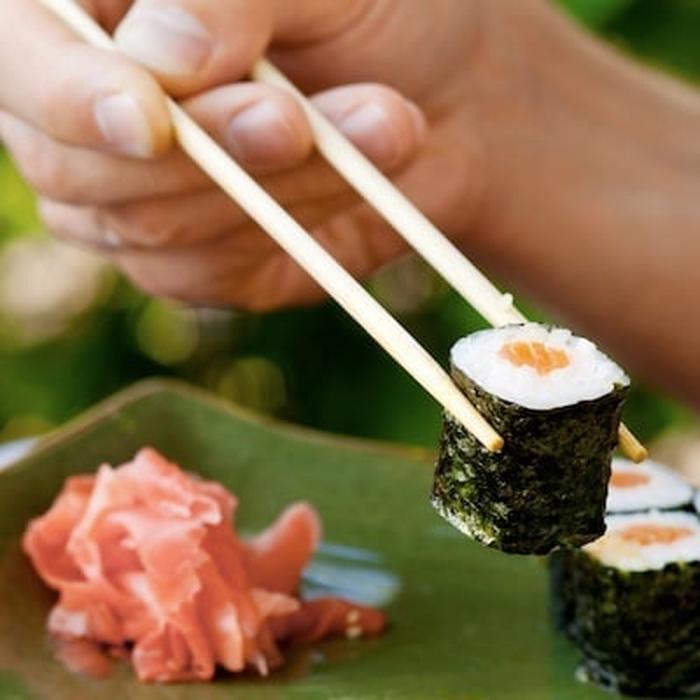
Traveling to a foreign country for work is exciting, but it can also be stressful—especially if you're unfamiliar with the local customs. That’s why, over the next few months, we’ll be exploring business dining etiquette around the world. Read on to learn more about eating out in Japan, then keep an eye out for more countries to come!
Headed to a business dinner in Tokyo or Osaka? Good manners are prized in any dining situation, but they're especially important in Japan, a culture that values harmony, politeness, negotiation, and teamwork. And if you don’t know the rules (which, yes, are much different than American norms), it's easy to commit a dining faux pas.
So, if you’re visiting Japan for work (or just want to learn more!), make sure to brush up on these business dining basics.
Dress the Part
The Japanese business culture is pretty conservative, so it's good idea to err on the side of caution and formality with your attire. Stick with dark colors, low-heeled shoes, and keep accessories to a bare minimum. Oh, and opt for skirts—as pantsuits can sometimes be viewed as offensive.
Take a Bow
Spend even a few minutes in Japan, and you’ll see that the typical Japanese greeting is a bow. There are different types of bows used for different situations, but for a business meal, use a formal bow—bending at your waist with a straight back to a 45 degree angle. Women usually place their hands together on their thighs while bowing (whereas men keep their hands at their sides).
Business Cards
Business cards (or meishi, as they're called in Japanese) are a must in Japan, always exchanged after the bows have taken place. You should have a version that has a Japanese translation on one side and an English translation on the other, and present it with both hands with the Japanese side facing upward. When you're presented with a business card in return, be sure to study it carefully—if you hastily shove it in your pocket or wallet, you'll offend your host.
Beginning and Ending the Meal
Just as expressions of gratitude can help you at work, they're also a vital part of a Japanese meal. Before you begin eating, join your hands in a prayer gesture (think the “Namaste” gesture from yoga) and quietly say “itadakimasu,” which means “I humbly receive.” After the meal is over, say “gochisōsama deshita,” which translates to “It has been a feast” and is the way of expressing your thanks to the host.
Chopsticks
OK, here’s one you probably know: Using chopsticks is the norm in Japan. But while you may be proud of simply being able to maneuver them without spilling rice on your lap, you also need to be mindful of where you place them throughout the meal.
When you're finished eating or you need to pause between bites, lay your chopsticks either at the edge of your plate, parallel to the edge of the table, or better yet, on the chopsticks holder on your plate (the ends you've been eating with should be resting on the holder).
Never, ever plant your chopsticks into a bowl of rice so that they're sticking up in the air. Why not? This resembles the image of the Japanese ritual of burning incense sticks at a funeral. (And reminding a Japanese client about his grandmother's funeral is a quick way to put a damper on a business deal.)
If your business associates are sharing food (as they often do in Japan) and you wish to do so, too, take a morsel from the shared plate, then pass the rest to another person. Passing food from your chopsticks to another persons' chopsticks is a big no because of another funeral image: It resembles the way the Japanese handle bones during cremation ceremonies. Plus, you’re likely to end up dropping your food.
Pouring Drinks
When pouring a drink from the shared sake or beer at the table, you should always serve others and never yourself. Your host (or someone else at the table) will then fill your glass for you. If someone holds his glass toward you, he’s asking you to pour him a drink. Making a toast? The Japanese word for cheers is “kampai.”
Clean Your Plate
The Japanese are mindful of avoiding food waste and usually eat all the food on their plates, and you should do the same. But don’t worry about being too stuffed to rise to the challenge—portions in Japan are known for being far smaller than American portions.
Now that you're armed with these Japanese business dining basics and no longer have to think about the etiquette of clearing your plate, you can focus on the more important parts of the meal—the business and the delicious food at hand! Enjoy!


